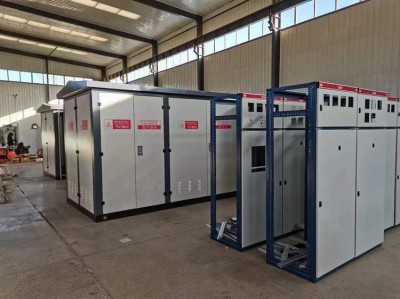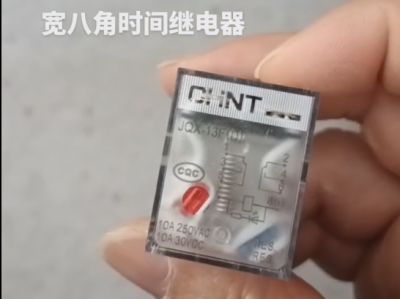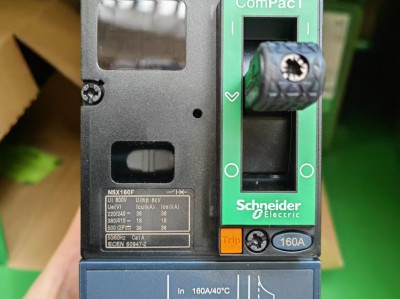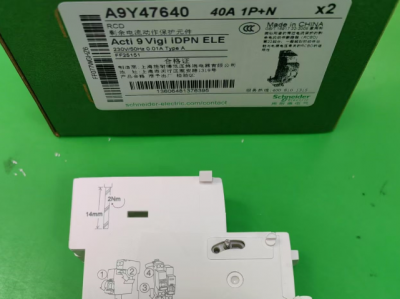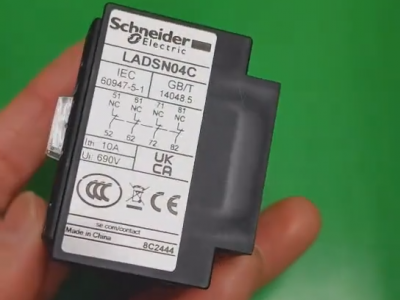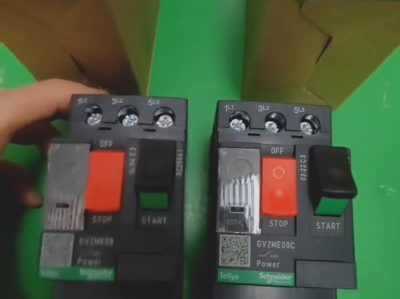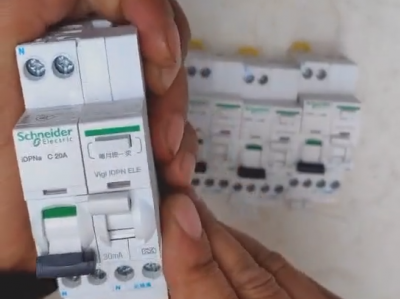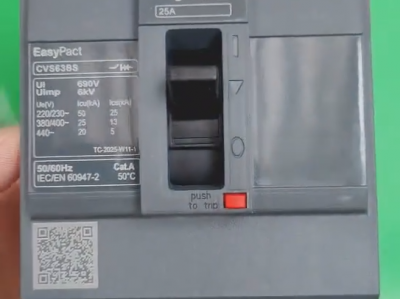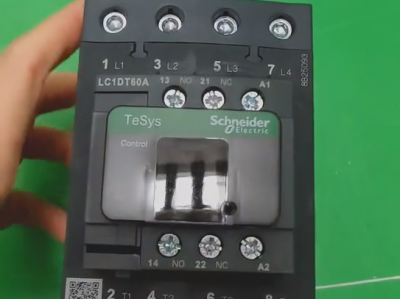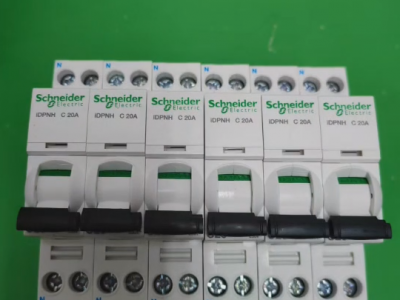Schneider ATS48C48Q 230-415V three-phase AC soft starter
Product description
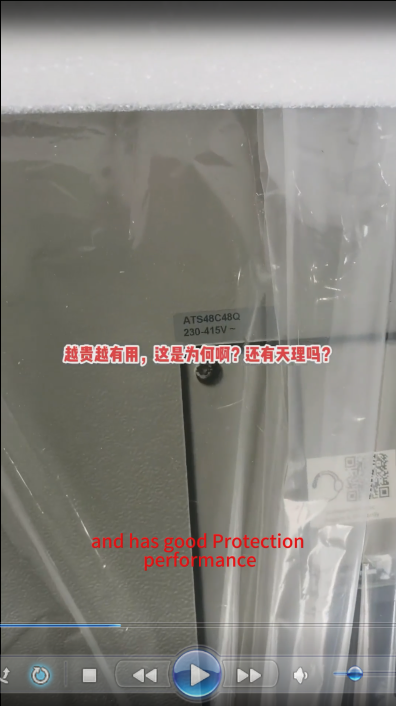
The Schneider ATS48C48Q 230-415V is a three-phase AC soft starter. The following introduction covers its basic information, performance parameters, functional features, application scenarios, and other dimensions:
Basic Information Schneider BMH0702P17A2A
- **Brand & Model**: ATS48C48Q series by Schneider Electric.
- **Product Type**: Soft starter, mainly used to control the starting and stopping of three-phase squirrel-cage asynchronous motors.
- **Power Supply Voltage**: 230V to 415V, with an allowable voltage fluctuation range of -15% to +10%.
Performance Parameters
- **Rated Current*Schneider-MCCB-NSX250F-4P-250A
- 480A (connected to motor power supply lines, standard application);
- 831A (connected to motor delta terminals, standard application) and 710A (severe application).
- **Motor Power*Schneider Circuit Breakers Price
- At 400V: 250kW (connected to motor power supply lines, standard application), 355kW (connected to motor delta terminals, standard application);
- At 230V: 250kW (connected to motor delta terminals, standard application), 132kW (connected to motor power supply lines, standard application).
- **Power Loss**: 1386W (standard application), 1172W (severe application).
- **Protection Class**: IP00.
Functional Features Chint's NB1-63DC series DC circuit breakers Price
- **Torque Control**: Utilizes the unique ATS torque control technology (Schneider Electric patent) to linearly control the torque supplied to the motor during acceleration and deceleration, significantly reducing pressure fluctuations while facilitating adjustments to ramp slopes and starting torque.
- **Protection Functions**: Includes built-in motor thermal protection, direct PTC thermal protection, underload and overcurrent protection during continuous operation, effectively safeguarding the safe operation of motors and equipment. Chint NXR series thermal overload relays price
- **Multiple Input/Output Interfaces**: Equipped with 4 logic inputs, 2 logic outputs, 3 relay outputs, and 1 analog output, enabling convenient connection and control with other devices.
- **Communication Function**: Features an RS485 serial port supporting the Modbus communication protocol, enabling remote communication and monitoring with host computers or other control systems. CHINT surge protector price
- **Bypass Function**: At the end of the starting process, the starter can be bypassed using a contactor while maintaining electronic protection, reducing power loss during operation.
Application Scenarios
- **Pump Equipment**: Such as centrifugal pumps and piston pumps, enabling smooth starting and stopping, reducing water hammer effects, and extending the service life of pumps and pipelines.
- **Fan Equipment**: Including various types of fans, capable of reducing starting current to avoid power grid impacts, while adjusting fan speed and air volume according to actual needs.
- **Compressor Equipment**: Such as refrigeration compressors, screw compressors, and centrifugal compressors, helping reduce mechanical stress during compressor starting and improving equipment reliability and stability.
- **Other Equipment**: Also applicable to conveyors, transporters, elevators, mixers, and blenders, enabling soft start and stop functions to reduce equipment wear and energy consumption.
The core working principle of the Schneider ATS48C48Q 230-415V soft starter is to achieve "soft starting" by gradually controlling the ramp-up rate of voltage and current through a **three-phase voltage regulation circuit composed of thyristors (silicon controlled rectifiers)**, reducing impacts on the motor, power grid, and mechanical systems. Below is a detailed explanation of its specific working principle and key components:
1. Core Control Component: Thyristor Voltage Regulation Circuit
The soft starter contains three sets of reverse-parallel thyristors (two thyristors per set, reverse-parallel connected, corresponding to each phase of the three-phase power supply), which regulate the output voltage by controlling the thyristors' **firing angle (conduction angle)**.
- **When the firing angle is 0°**: Thyristors are fully conducting, outputting rated voltage (e.g., 415V), and the motor operates at full voltage.
- **When the firing angle is between 0° and 180°**: Thyristors are partially conducting, outputting a voltage lower than the rated voltage. The motor's input voltage can be precisely controlled by adjusting the firing angle.
2. Starting Process: Voltage/Current Ramp Control
The soft starter supports multiple starting modes, with the most common being **voltage ramp starting** and **current ramp starting**, which share similar principles but differ in control objectives:
# 1. Voltage Ramp Starting
- **Initial Stage**: The firing angle is large (e.g., 150°), thyristors conduct for a short time, and the output voltage is low (e.g., 30% of rated voltage). The motor starts rotating with low torque to avoid excessive mechanical冲击 (shock).
- **Ramp-Up Stage**: The controller gradually decreases the firing angle (e.g., from 150° to 0°) at a preset slope, increasing the output voltage from the initial value to the rated voltage. The motor's torque linearly increases, and its speed rises smoothly.
- **Objective**: By controlling the voltage ramp-up rate, avoid sudden surges in motor starting current while ensuring torque meets load requirements (e.g., overcoming the static friction of a water pump).
2. Current Ramp Starting (with Torque Control)
- **Core Logic**: Aims to **limit starting current** by dynamically adjusting the thyristor firing angle through real-time monitoring of motor current, maintaining the current at a preset value (e.g., 2–4 times the rated current).
- **Working Process**:
- In the initial starting phase, the firing angle is large, the output voltage is low, and the current rises to and remains constant at the preset value.
- As the motor speed increases, back electromotive force rises, and the current gradually decreases. The soft starter then automatically increases the voltage (decreases the firing angle) until the motor reaches rated speed, the firing angle returns to 0°, and the thyristors fully conduct.
- **Advantage**: Suitable for scenarios sensitive to power grid impacts (e.g., small grid capacity or simultaneous starting of multiple motors), avoiding voltage dips caused by excessive current.
3. Torque Control and Patent Technology
Schneider's ATS48 series features a unique **torque control technology (patented)**, a core advantage:
- **Principle**: By real-time calculating the motor's electromagnetic torque and matching it with the load torque, dynamically adjusting voltage and current to maintain linear torque changes during starting and stopping.
- **Application Scenarios**:
- **Pump Loads**: Reduces "water hammer effects" (pipeline impacts caused by fluid inertia), extending pipeline and valve life.
- **Fan Loads**: Avoids mechanical stress concentration on impellers due to excessive starting torque, reducing equipment wear.
- **Implementation**: Integrates motor models with current and voltage feedback data to accurately calculate torque values, adjusting the firing angle via closed-loop control instead of relying solely on voltage or current ramps.
4. Stopping Process: Soft Stop Control
The soft starter not only controls starting but also supports **soft stopping** (as opposed to emergency stops):
- **Voltage Ramp-Down**: During stopping, the firing angle gradually increases, and the output voltage decreases from rated voltage to zero, allowing the motor speed to decline smoothly.
- **Application Scenarios**:
- Pump Loads: Prevents fluid backflow and pipeline impacts caused by sudden shutdowns.
- Conveyor Loads: Avoids cargo sliding or accumulation due to inertia.
5. Protection Functions and Operational Logic
The soft starter implements multiple protections through built-in sensors and algorithms during operation:
1. **Overcurrent Protection**: When current exceeds the set threshold (e.g., 6 times rated current), rapidly cuts off thyristor firing signals to prevent motor burnout.
2. **Overheat Protection**: Monitors thyristor and internal component temperatures, automatically stopping the motor and alarming when overheating occurs.
3. **Under-Voltage/Over-Voltage Protection**: Detects whether the power supply voltage is within the allowable range (-15% to +10%), triggering protection in case of abnormalities.
4. **Motor Thermal Protection**: Simulates motor temperature rise curves via built-in thermal models or external PTC thermistors to prevent insulation aging due to overload.
6. Comparison with Traditional Starting Methods
| Starting Method | Principle | Advantages | Disadvantages |
| Direct Starting | Full-voltage direct closing | Simple, low cost | Large current inrush (5–8× rated current) |
| Star-Delta Starting | Star-delta voltage reduction | Reduces starting current (≈1/3 of direct starting) | Current inrush during switching, requires additional contactors |
| Soft Starter Starting | Thyristor voltage ramp control | Controllable current/torque, low inrush | Higher cost, requires heat dissipation design |
Conclusion
The Schneider ATS48C48Q soft starter achieves "smooth transition" of motor starting through **thyristor voltage regulation + closed-loop control algorithms**. Its core values include:
- Reducing mechanical impacts and extending equipment life;
- Mitigating power grid current inrushes and avoiding voltage fluctuations;
- Supporting flexible parameter settings (e.g., starting time, current limiting ratio) to adapt to diverse load requirements.
This principle makes it widely applicable to industrial scenarios involving large motor drives such as pumps, fans, and compressors.

